Input interpretation

dinitrogen tetroxide
Chemical names and formulas

formula | N_2O_4 name | dinitrogen tetroxide alternate names | dinitrogen tetraoxide | nitrogen oxide | nitrogen peroxide mass fractions | N (nitrogen) 30.4% | O (oxygen) 69.6%
Lewis structure
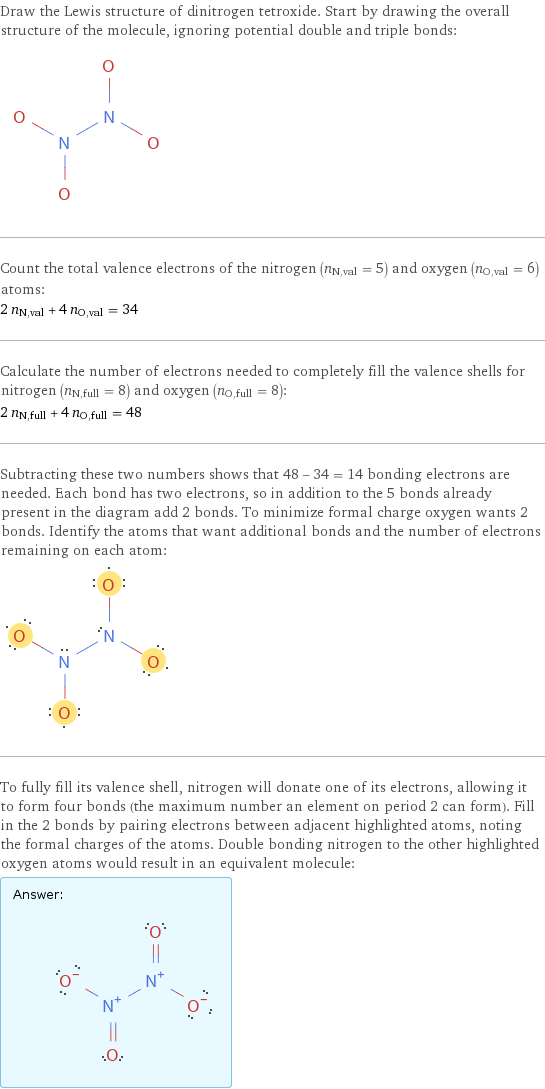
Draw the Lewis structure of dinitrogen tetroxide. Start by drawing the overall structure of the molecule, ignoring potential double and triple bonds: Count the total valence electrons of the nitrogen (n_N, val = 5) and oxygen (n_O, val = 6) atoms: 2 n_N, val + 4 n_O, val = 34 Calculate the number of electrons needed to completely fill the valence shells for nitrogen (n_N, full = 8) and oxygen (n_O, full = 8): 2 n_N, full + 4 n_O, full = 48 Subtracting these two numbers shows that 48 - 34 = 14 bonding electrons are needed. Each bond has two electrons, so in addition to the 5 bonds already present in the diagram add 2 bonds. To minimize formal charge oxygen wants 2 bonds. Identify the atoms that want additional bonds and the number of electrons remaining on each atom: To fully fill its valence shell, nitrogen will donate one of its electrons, allowing it to form four bonds (the maximum number an element on period 2 can form). Fill in the 2 bonds by pairing electrons between adjacent highlighted atoms, noting the formal charges of the atoms. Double bonding nitrogen to the other highlighted oxygen atoms would result in an equivalent molecule: Answer: | |
3D structure
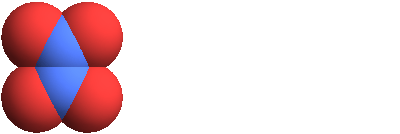
3D structure
Basic properties
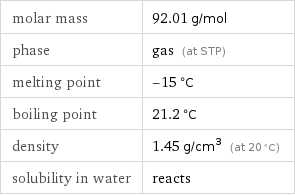
molar mass | 92.01 g/mol phase | gas (at STP) melting point | -15 °C boiling point | 21.2 °C density | 1.45 g/cm^3 (at 20 °C) solubility in water | reacts
Units

Gas properties (at STP)
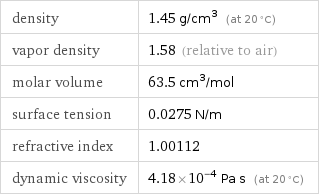
density | 1.45 g/cm^3 (at 20 °C) vapor density | 1.58 (relative to air) molar volume | 63.5 cm^3/mol surface tension | 0.0275 N/m refractive index | 1.00112 dynamic viscosity | 4.18×10^-4 Pa s (at 20 °C)
Units

Thermodynamic properties
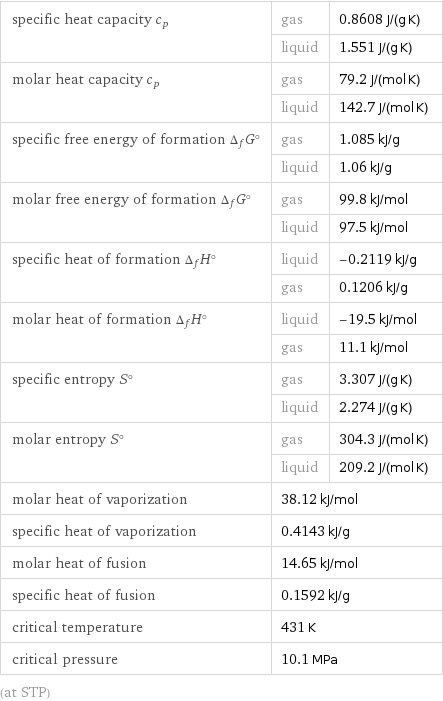
specific heat capacity c_p | gas | 0.8608 J/(g K) | liquid | 1.551 J/(g K) molar heat capacity c_p | gas | 79.2 J/(mol K) | liquid | 142.7 J/(mol K) specific free energy of formation Δ_fG° | gas | 1.085 kJ/g | liquid | 1.06 kJ/g molar free energy of formation Δ_fG° | gas | 99.8 kJ/mol | liquid | 97.5 kJ/mol specific heat of formation Δ_fH° | liquid | -0.2119 kJ/g | gas | 0.1206 kJ/g molar heat of formation Δ_fH° | liquid | -19.5 kJ/mol | gas | 11.1 kJ/mol specific entropy S° | gas | 3.307 J/(g K) | liquid | 2.274 J/(g K) molar entropy S° | gas | 304.3 J/(mol K) | liquid | 209.2 J/(mol K) molar heat of vaporization | 38.12 kJ/mol | specific heat of vaporization | 0.4143 kJ/g | molar heat of fusion | 14.65 kJ/mol | specific heat of fusion | 0.1592 kJ/g | critical temperature | 431 K | critical pressure | 10.1 MPa | (at STP)
Chemical identifiers
([N+](=O)[O-])[O-] InChI identifier | InChI=1/N2O4/c3-1(4)2(5)6 EU number | 234-126-4 Gmelin number | 2249 RTECS number | QX1575000](../image_source/3c1cf84b1a42ae0f8a6f690d2115378c.png)
CAS number | 10544-72-6 PubChem CID number | 25352 SMILES identifier | [N+](=O)([N+](=O)[O-])[O-] InChI identifier | InChI=1/N2O4/c3-1(4)2(5)6 EU number | 234-126-4 Gmelin number | 2249 RTECS number | QX1575000
NFPA label

NFPA label
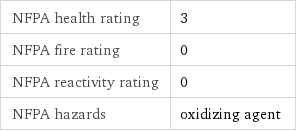
NFPA health rating | 3 NFPA fire rating | 0 NFPA reactivity rating | 0 NFPA hazards | oxidizing agent
Toxicity properties

RTECS classes | other